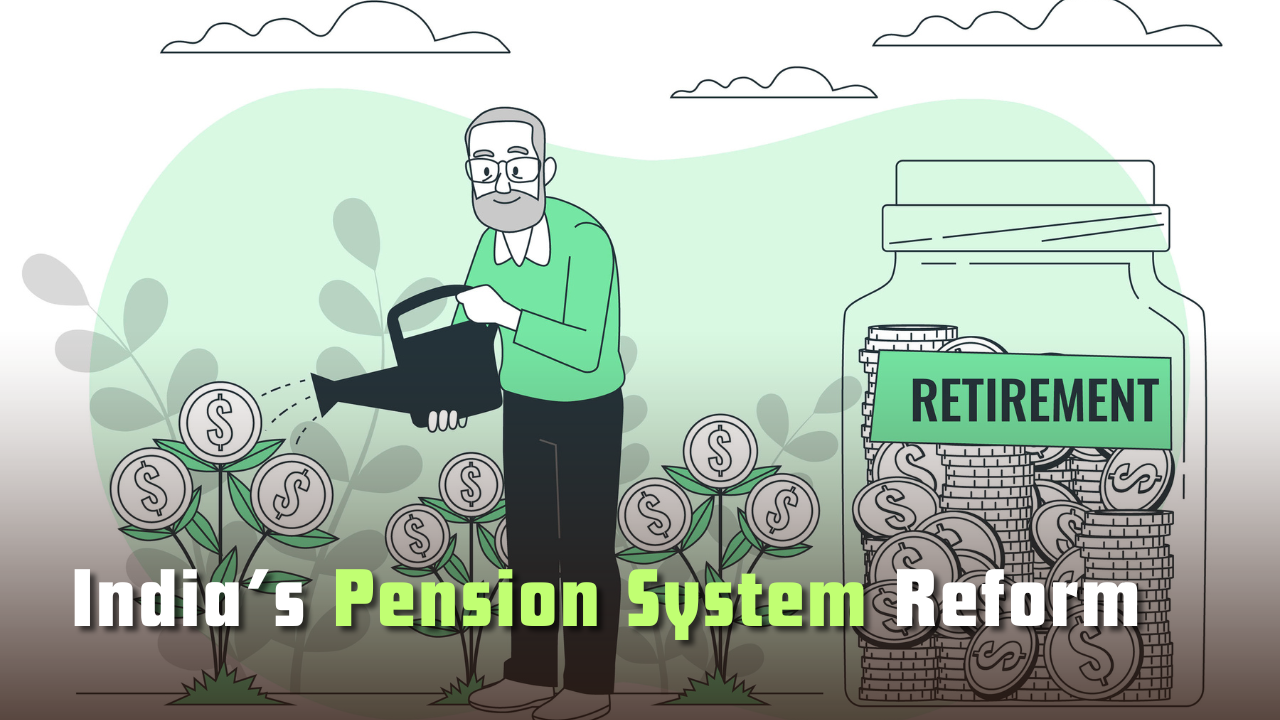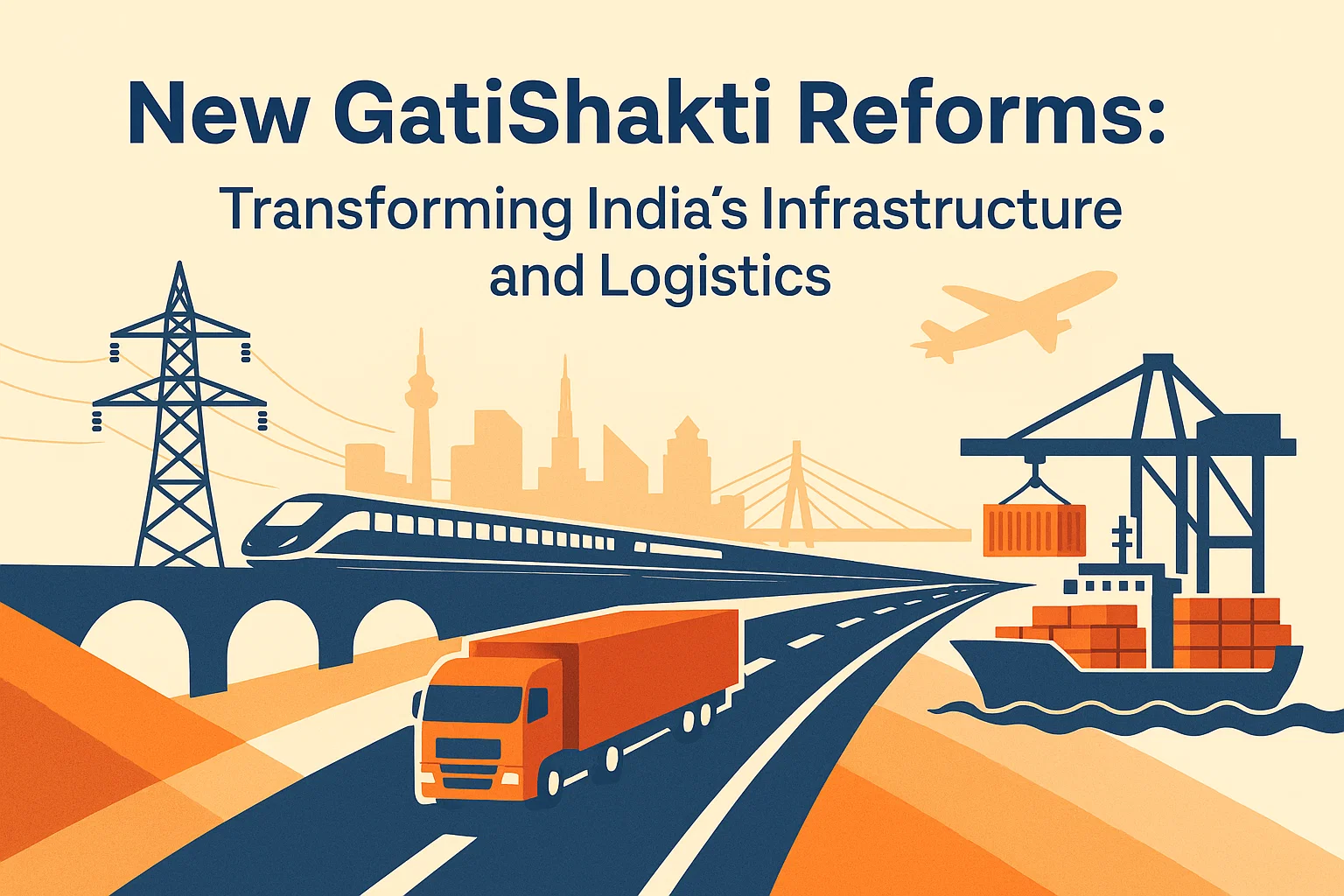India’s Pension System Reform
India needs to design an inclusive pension system
Context: Pension system play a critical role in ensuring financial stability and dignity after retirement, particularly in a country like India where economic vulnerability intensifies with age.
Present Status in India
- With rising healthcare expenses, inflation, and limited income-generating options, the need for a robust pension framework is more urgent than ever.
- However, India’s pension system remains underdeveloped and unevenly distributed.
- According to the Economic Survey 2025–26, Indian pension assets account for just 17% of GDP—far below the 60–80% seen in many advanced economies.
- Alarmingly, only about 12% of the Indian workforce is covered by formal pension schemes.
- Public sector and organised private sector employees enjoy relatively comprehensive protection, but the informal sector, which comprises nearly 85% of India’s workforce, remains largely outside the safety net.
Informal Sector and the Pension Coverage Gap
- India’s informal workforce contributes more than half of the country’s GDP, and its exclusion from pension schemes is both a policy oversight and a looming financial crisis.
- With the old-age dependency ratio expected to hit 30% by 2050, failing to integrate the informal sector into the pension system will hinder India’s goal of becoming a developed economy by 2047.
- Currently, voluntary pension schemes like the National Pension System (NPS) and Atal Pension Yojana (APY) offer limited coverage—only about 5.3% of the total population as of FY24.
- The lack of mandatory participation, low awareness, and fragmented delivery mechanisms have stunted wider adoption.
Global Lessons: Building a Structured and Scalable Pension System
India can draw lessons from countries with inclusive, scalable pension ecosystems:
- Japan: Japan runs a compulsory, flat-rate contributory scheme for all residents aged 20 to 59, covering both formal and informal workers.
- New Zealand: New Zealand offers a universal flat-rate pension for those over 65, provided they meet a 10-year residency requirement.
- UK: The UK has adopted an opt-out pension system for employees, effectively encouraging participation by default.
- Nigeria: Nigeria has scaled pension access through an expansive digital infrastructure, boosting informal sector inclusion.
Financial Literacy and Accessibility Are Key
- Low financial literacy continues to hamper pension adoption in India.
- To address this, targeted educational campaigns at the grassroots level are critical.
- For instance, Australia integrates superannuation planning into its school curriculum, while the Netherlands ensures annual disclosure of pension entitlements by occupational pension funds.
- Further, simplified digital enrolment systems and mobile-friendly platforms can boost accessibility for gig workers, self-employed individuals, and other informal sector participants.
Ensuring Sustainability and Adequacy of Pension Funds
- The Mercer CFA Institute Global Pension Index 2024 rated India’s pension system at just 44%, with a sharp decline in the adequacy sub-index.
- To address these concerns, India must focus on strengthening both public and private pension funds.
- China’s experience shows that reliance on public pensions alone is risky without supplemental private funds.
- On the other hand, countries like Denmark, the Netherlands, Australia, and the US use private and occupational pension investments to bolster public systems and ensure long-term sustainability.
A Three-Tier Pension Framework for India
To overcome the challenges of scalability, sensitisation, and sustainability, India should move towards a unified, three-tier pension structure:
- Tier 1 (Mandatory Basic Pension Guarantee): A flat-rate, contributory pension scheme covering all citizens, regardless of occupation.
- Tier 2 (Occupational and Employer-Based Pensions): Auto-enrolment schemes for workers in formal and informal settings, with employer contributions and opt-out options.
- Tier 3 (Voluntary Retirement Savings): Tax-incentivised and flexible investment options to complement the core pension.
- A unified pension regulator would ensure harmonisation, accountability, and smoother integration across schemes.
Way Forward
With a rapidly ageing population, India must act now to ensure that every worker—formal or informal—has access to retirement security. Policymakers must prioritise:
- Designing an inclusive, tiered pension architecture
- Launching national-level financial literacy initiatives
- Creating easy-to-use digital enrolment systems
- Strengthening regulations for pension fund investments and disclosures
A minimum pension guarantee, backed by smart policy reforms and global best practices, will secure the future of India’s ageing workforce and fortify its economic aspirations.
Subscribe to our Youtube Channel for more Valuable Content – TheStudyias
Download the App to Subscribe to our Courses – Thestudyias
The Source’s Authority and Ownership of the Article is Claimed By THE STUDY IAS BY MANIKANT SINGH



